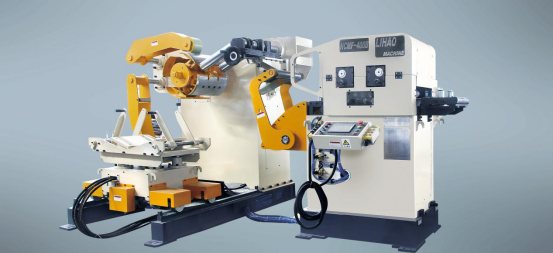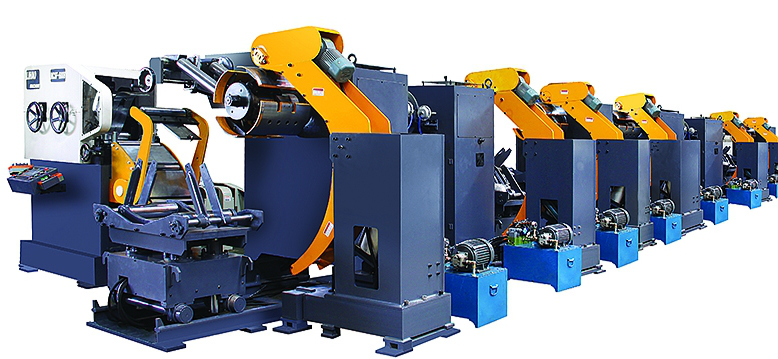The three-in-one feeding machine is mainly composed of the material rack part and the leveling feeding part, and the main problems in the design appear in the leveling feeding part, the leveling feeding part of the three-in-one feeding machine includes the front feeding mechanism, the leveling mechanism, the feeding mechanism and the driving device.Then, what are the common problems in the design and production of three-in-one feeder?

1、3 IN 1 feeder in use process, in case of relaxation is used when the power supply for air pressure, and is usually connected to punch, hard to avoid can produce vibration often happens for vibration the triad of positioning screw loose and affect the leveling accuracy of feeding, so it adopts the way is directly on the side panel processing countersunk head hole in the shaft end tapping and fixed on both sides of the plate distance, or without positioning shaft, this way is not conducive to adjust positioning shaft to eliminate the error.
2、In the drive device of three-in-one feeder, the feeding roller is generally controlled by the servo motor. Since the output torque of the servo motor is too small to meet the needs of use, a certain deceleration should be carried out between the feeding roller and the servo motor to meet the requirements of increasing the kneading moment.General in structure in addition to using reducer to slow down, basically is to use two levels of synchronous wheel deceleration or adopt synchronous wheel deceleration, in actual manufacturing and the use process, because of the difference in structure, if the two levels of synchronous wheel deceleration, is not convenient in installation, at the same time after the synchronous belt wear will replace the synchronous belt is more trouble, if the level of synchronous wheel deceleration, is in the process of actual use, due to the slowdown is bigger, synchronous belt meshing teeth small, resulting in a loss of transmission rate, the effect is not very ideal.
3、Triad feeder in the process of feeding, in order to use the precision requirement, general requirements will be set in the middle of the die positioning pin, to eliminate each feeding error, so the need to feed equipment have relaxation function, in each feeding interval is complete, the need to feed roller to relax in order to achieve each product, to eliminate the cumulative error of each feeding.In actual triad feeder in use process, found that real relax when you just need to relax and relaxing can completely meet the use requirements, after the former relaxation is only to be used in the process of the coil, and relax, if taken before of after all relaxed, it is hard to the motor control to complete reunification, relaxation and relaxation roll just before the material elastic is bigger or thicker, for the convenience of feed will be under pressure to send material.

The three-in-one feeder has the advantages of high automation, good leveling, good feeding accuracy, high synchronization performance with the punching machine, simple operation, great labor cost saving and space occupying, etc., and has won the favor of more and more stamping customers.With the increase of the demand, there are more and more domestic manufacturers engaged in the production of three-in-one feeder, but the quality also presents uneven, especially in the design and production of more and more problems.
In the design and production of the three-in-one feeder, according to the three common problems, carried out a meticulous optimization and improvement, using the first stage synchronous wheel reducer and then drive the first stage gear reducer transmission device, not only installation and maintenance is convenient, and is conducive to improve the transmission efficiency;Before feeding the roller cylinder from automatic valve control to manual valve control, easy to operate and save costs;The side plate positioning shaft can effectively position and adjust the positioning shaft to eliminate errors.